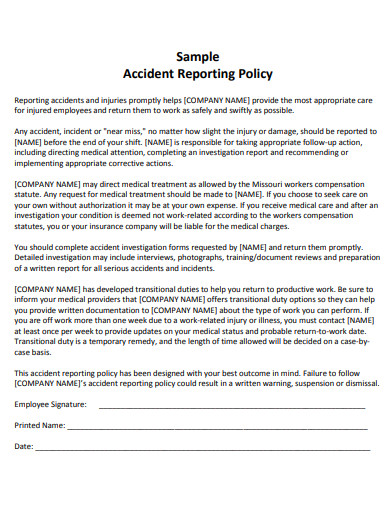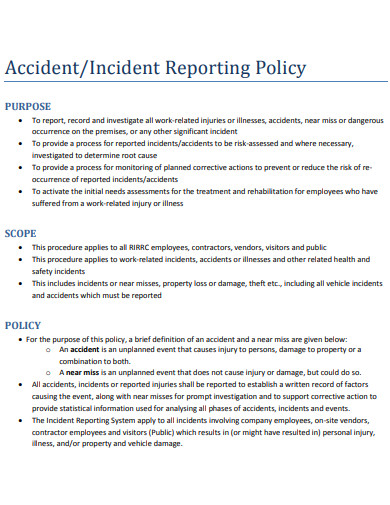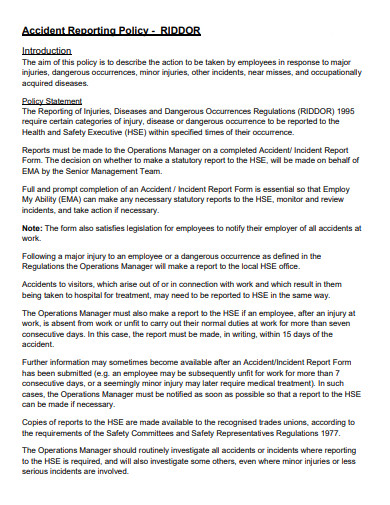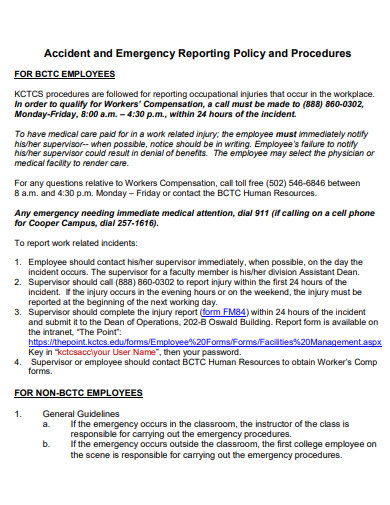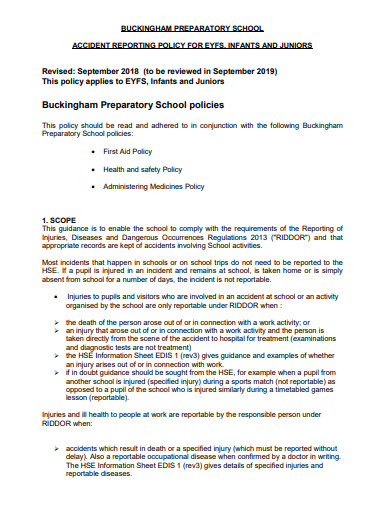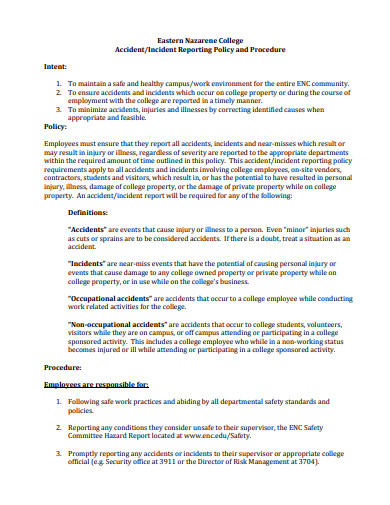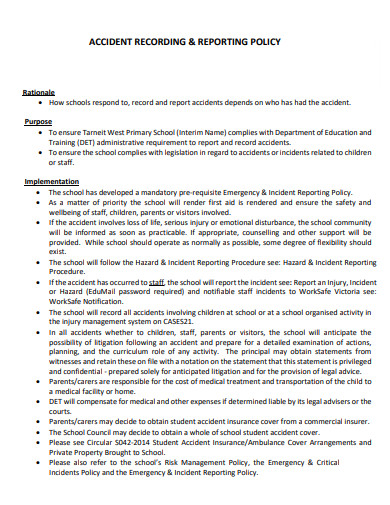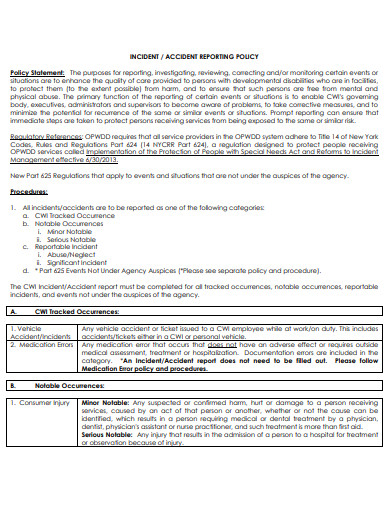When you think about an accident, you know that it is a requirement to report it. May it be in school, in a vehicle or even in any kind of incident that happens in and out of the most common places. Since accidents happen just about anywhere and at any time at all, it is always nice to have a plan and to know how to report an accident when it happens. In companies and even schools, they have a policy when it comes to reporting accidents. Here are examples for accident reporting policy for incidents, vehicles and even schools.
[bb_toc content=”][/bb_toc]
10+ Accident Reporting Policy Examples
1. Accident Reporting Policy Template
2. Sample Accident Reporting Policy
3. Printable Accident Reporting Policy
4. Accident Reporting Policy in PDF
5. Accident and Emergency Reporting Policy
6. Basic Accident Reporting Policy
7. Accident Reporting Policy and Procedure
8. Accident Reporting Policy Example
9. Accident Recording and Reporting Policy
10. Formal Accident Reporting Policy
11. Employee Accident Reporting Policy in DOC
What Is an Accident Reporting Policy?
Accident reporting policies are calls to actions regarding how employees, students or anyone who witness the incident can report. These policies help determine the kind of accident report, the details regarding the report and how severe the accident report is about. Policies also help in determining what call to action should be made or done in order to resolve this issue. In addition, it describes plans and methods that are going to be used as a means of understanding the nature of the accident. Lastly, the purpose for an accident reporting policy is to help give out the right steps to resolving this matter.
How to Make an Accident Reporting Policy
Policies help generate what call of action should be and can be made when reporting or when you need something to be done. This will also mean that how you make your reporting policy applicable for everyone and anyone is standard and important. With that, here are four simple, and easy-to-follow steps to making an accident reporting policy.
Step 1: Make a Brief Purpose for the Policy
First thing to do when you make the policy is to make a brief purpose and scope. The brief purpose and scope will explain to the members or employees of the use and benefits they can get from the reporting policy. Make it brief but at the same time make it clear for them to know how they are able to write their accident report based on the levels and the specifics from the policy.
Step 2: Specify What Should Be in the Report
Specify in the policy what should be and what should not be in the report. Just as writing what the report is about, it is also best to assure people what should be added in an accident report and what should not be added in it. What is expected is the nature of the incident, the people involved and of course the time and date of the accident.
Step 3: Seek Out Practical Procedures or Steps
The next step is to add in the policy to seek out practical steps or procedures to help. These procedures will be expected in an accident reporting document. You can add steps that will depend on the severity of the accident or the incident and the practical procedures that follow through.
Step 4: Set up Consequences for the Report Policy
The last step to making the policy is to set up consequences for each of the offenses. These consequences must also weigh equally with the incident and the incident report. Find consequences that will not be too much or too less when it comes to handling the reports.
FAQs
What is an accident reporting policy?
Accident reporting policies are calls to actions regarding how employees, students or anyone who witness the incident can report.
Why do you need to make a report policy for incidents?
These policies help determine the kind of accident report, the details regarding the report and how severe the accident report is about. Policies also help in determining what call to action should be made or done in order to resolve this issue.
What are the steps to creating this policy?
The most basic thing to remember is when there is a problem, this being the incident, there should also be a solution, a call to action or a consequence.
We are often if not always told when you witness an accident, whether in the office, or it involves people you work with, you must always report that accident or that incident. There are policies in workplaces and schools that help let people report the incident and for the people responsible to find a way to resolve this. Here are some examples of accident reporting policies you should definitely download.





